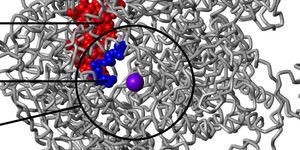Antibiotics & Resistance Come From the Same Place
When outbreaks occur, scientists trace them back to their source, revealing more about the pathogen and helping us to fight it. Investigators want to do the same with genes that spread resistance to antibiotics, which are expected to present serious challenges to public health in the coming years. Reporting in Nature Communications, scientists have found proof that genes that confer antibiotic resistance come from the same place that antibiotics themselves originate from.
That has been a hypothesis for over 30 years, and now it has been confirmed. Work performed at The Novo Nordisk Foundation Center for Biosustainability - DTU Biosustain - at Technical University of Denmark has shown that a phylum of bacteria called Actinobacteria give rise to antibiotics that end up treating three quarters of human infections. That group of bacteria also carries genes that enable resistance to antibiotics.
"It has been suspected that pathogens can obtain resistance genes from Actinobacteria for half a century. So now with the 100 percent identical genes we find the smoking gun," said Postdoctoral Fellow Xinglin Jiang of DTU Biosustain.
They also were intrigued to learn that many of the resistance genes carried by gram-negative pathogenic microbes had a high degree of similarity to the genes carried by Actinobacteria; in one example there was an exact match between the genes.
Related: New, Powerful Antibiotic Found in Soil
Because there is not much in common between Actinobacteria and the microbial pathogens, the scientists were not sure how the latter could be acquiring genes from the former. The sequence surrounding the genes revealed more when the investigators analyzed it. Using a novel mechanism called ‘carry back,’ the pathogen couples with the Actinobacteria in a type of ‘sex’ and takes up the resistance gene after the death of the bacteria.
Because Actinobacteria is present in soil everywhere, it’s entirely possible that pathogens encounter it on farms, in waste or anywhere soil is and can easily go through gene transfer. After acquiring a resistance gene, what was once a typical nasty pathogen is transformed into a potentially deadly microbe.
Uncovering the origins of resistance genes is essential to stopping the spread of antibiotic resistance, commented Tilmann Weber, senior researcher at DTU Biosustain. "We can't stop this gene transfer, but when you know, which resistance genes pathogens may harbor, you can personalize the antibiotic treatment. Also, with this knowledge you can try to develop new antibiotics with other properties that the pathogens don't have a defense against," Weber concluded.
Learn more about the process called conjugation, a kind of bacterial sex.
Sources: AAAS/Eurekalert! Via DTU Biosustain, Nature Communications









